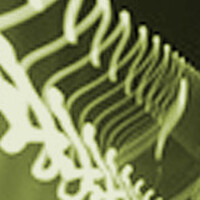Observing the choreographers’ working process up close
Blog post
By 学者日志(Yan Zhenzhen)
16 June
近距离观察编导们的工作过程是非常有趣的事情,ArtsCross充分展现了艺术创作在方法上的多元性。
Terry Tsang的作品创意尝试声音与身体运动之间全新的连接方式:通过AI技术的使用,也许我们会找到来自“身体动作”的声音,而不是人为地将某种声音“嫁接”到身体动作上。声音元素的选择与编导个人的切身经验之间紧密相关,“骨头”与“水”的声音质感与身体动作质感之间是否会形成丰富的对照关系,一切尚在未知之中。
相比Terry Tsang在技术手段方面的探索,Liu Mengchen的创意方式显得非常具身化,她将演员们的私人经验融入到作品的创意中,并且使用了来自舞者自己的声音融入音乐。
两位创作者呈现出一种有趣的反差:前者在作品中鼓励舞者们自由地进行身体动作的组织,通过声音元素保持统一的意象;后者则试图将差异化的个人经验统一在强烈的身体动作风格中,呈现出舞动质感的统一性。身体与经验在两个作品的创意中呈现出不同的协调方式:1.通过整体意象协同多元的身体动态;2.用特定的动态风格将多元的个人经验溶于其中。这呈现出舞蹈创作中非常独特的现象,亦即同一性与多元性之间的张力,这种张力构成了“群感”,也就是“和而不同”。显然,在现代社会中,个体与群体之间的“边缘”充满张力,也是每个人尝试寻找“平衡点”的基本经验。
Observing the choreographers’ working process up close is a fascinating experience. ArtsCross fully demonstrates the methodological diversity of artistic creation.
Terry Tsang's creative concept explores a novel connection between sound and bodily movement: through AI technology, we may discover sounds generated by physical motion itself, rather than artificially “grafting” pre-existing sounds onto movements. The selection of sonic elements is intimately tied to the choreographer’s personal experiences—whether the textural qualities of “bone” and “water” sounds will form rich contrasts with the texture of bodily movements remains unknown.
Compared to Terry Tsang’s technological experimentation, Liu Mengchen’s creative approach appears profoundly embodied. She integrates the performers’ personal experiences into the work’s conception and incorporates the dancers’ own voices into the musical composition.
The two creators present an intriguing contrast:
- The former encourages dancers to freely organize their movements while unifying imagery through sonic elements;
- The latter seeks to harmonize diverse personal experiences within a distinct movement vocabulary, achieving uniformity in the texture generated by body's movements.
Body and experience are reconciled differently across both works:
1. Coordinating diverse bodily dynamics through cohesive imagery;
2. Dissolving varied personal experiences into a specific dance style.
This reveals a unique phenomenon in choreography—the tension between uniformity and multiplicity, which constitutes “group-sense” (群感), or “harmony in diversity” (和而不同). Evidently, in modern society, the “edges” between individual and collective identities remain tension-filled, reflecting every person’s fundamental quest to find their “point of balance.”
Posted by

Andrew Lang

